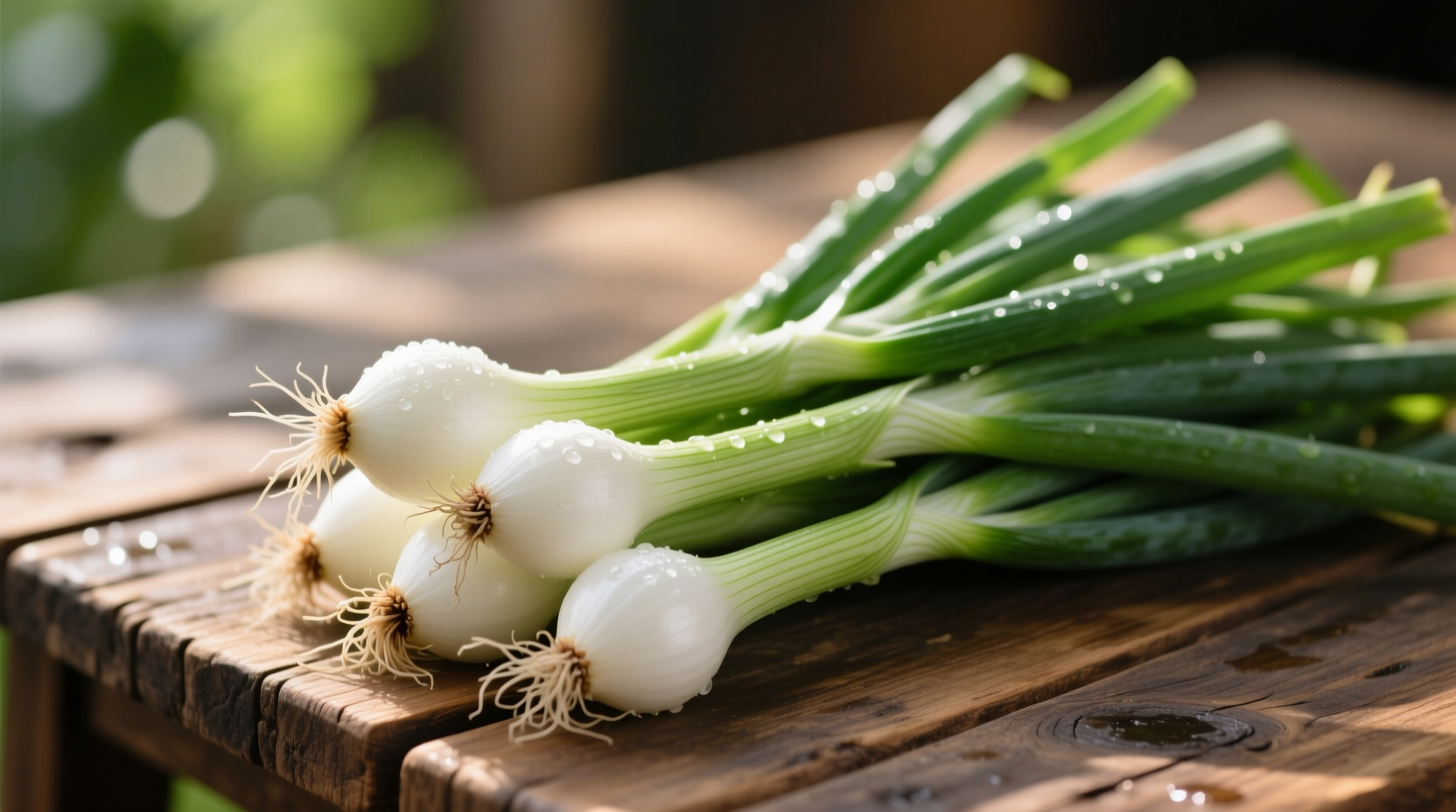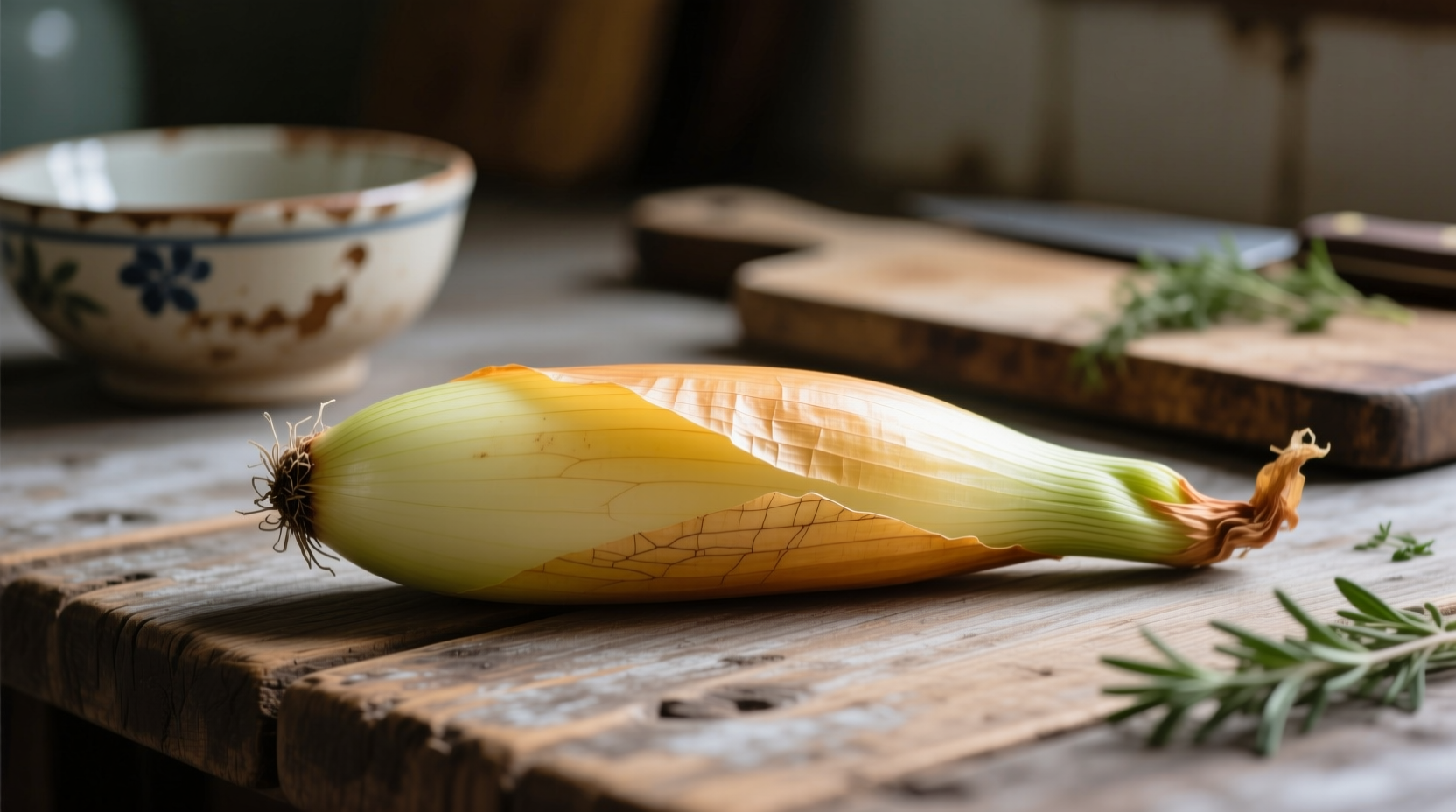Ever found yourself confused at the grocery store when a recipe calls for "long onions"? You're not alone. This comprehensive guide cuts through the confusion, revealing exactly what long onions are, how to identify them, and why they're a kitchen essential across cultures. By the end, you'll confidently select, store, and use these versatile alliums to elevate your cooking with professional results.
What Exactly Are Long Onions?
Long onions, most commonly known as scallions or green onions, belong to the Allium fistulosum species. Unlike bulb onions (Allium cepa) that develop large rounded bulbs, long onions maintain their slender, cylindrical shape throughout growth. The entire plant is edible—from the crisp white base to the tender green tops—making them incredibly versatile in cooking.
These alliums are harvested when young, typically 60-90 days after planting, before the bulb fully forms. This early harvest gives them their distinctive mild flavor compared to mature onions. The confusion in terminology stems from regional differences—"long onion" is commonly used in parts of Asia and the Caribbean, while "scallion" predominates in North America and "spring onion" in the UK and Australia.

Long Onions vs. Similar Alliums: Clearing the Confusion
Understanding the differences between long onions and similar alliums prevents recipe mishaps. Here's how they compare:
| Allium Type | Appearance | Flavor Profile | Best Culinary Uses |
|---|---|---|---|
| Long onions (scallions) | Slender white bulb, long green stalks | Mild, fresh, slightly peppery | Raw garnishes, stir-fries, soups |
| Regular onions | Large rounded bulb | Strong, pungent when raw | Caramelizing, roasting, stews |
| Leeks | Thick white shaft, broad green leaves | Subtly sweet, milder than onions | Creamy soups, braises, gratins |
| Chives | Hollow green tubes, no bulb | Delicate onion flavor | Garnishes, egg dishes, dips |
Nutritional Powerhouse: Why Long Onions Deserve a Place on Your Plate
Long onions pack impressive nutritional benefits while adding flavor without significant calories. According to USDA FoodData Central, one cup (100g) of chopped scallions provides:
- 32 calories
- 2.6g of dietary fiber (9% of daily value)
- 145% of your daily vitamin K needs
- 112% of your daily vitamin C requirements
- Significant amounts of vitamin A, folate, and calcium
Research published in the Journal of Agricultural and Food Chemistry confirms that long onions contain organosulfur compounds with potential anti-inflammatory and cardiovascular benefits. Unlike mature onions, they're gentler on digestion while still delivering these health advantages.
Mastering Long Onion Selection and Storage
Choosing quality long onions makes a noticeable difference in your dishes. Look for these characteristics:
- Firmness: Stalks should feel crisp and snap when bent
- Color: Vibrant green tops without yellowing or wilting
- Roots: White roots should appear moist but not slimy
- Size: Diameter between ¼ to ½ inch for optimal tenderness
Proper storage extends freshness significantly. Wrap unwashed long onions in a slightly damp paper towel, place in a plastic bag with small ventilation holes, and store in your refrigerator's crisper drawer. This method maintains moisture balance while preventing premature spoilage. When stored correctly, they'll stay fresh for 10-14 days—nearly double the shelf life of improperly stored specimens.
Culinary Applications: Maximizing Flavor in Every Dish
The white and green parts of long onions offer distinct flavor profiles that professional chefs leverage strategically:
- White portion: More intense onion flavor, ideal for cooking at the beginning of recipes
- Green portion: Milder, grassier notes perfect for finishing dishes or raw applications
For stir-fries, add white parts first to build flavor foundation, then incorporate green parts during the final minute of cooking. In soups and stews, slice whites thinly and add early, while chopping greens more coarsely for later addition. When making homemade dressings or dips, use only the green portions for subtle flavor without overpowering acidity.
Professional tip: Never discard the root ends! Save them in a freezer bag to use as aromatic bases for stocks and sauces. The concentrated flavor in these often-discarded parts adds depth to your cooking without waste.
Global Culinary Traditions Featuring Long Onions
Long onions have played significant roles in culinary traditions worldwide. Historical records from China's Han Dynasty (206 BCE–220 CE) document their use in medicinal and culinary applications. By the 16th century, Portuguese traders had introduced them to Japan, where they became essential in dishes like negi-maki (scallion-wrapped fish).
In Mexican cuisine, long onions feature prominently in pico de gallo and as garnishes for tacos. Korean cooking utilizes them in kimchi variations and as wrappers for delicate fillings. French cuisine incorporates them into fines herbes blends and as elegant garnishes for refined dishes.
Smart Substitutions When Long Onions Aren't Available
While nothing perfectly replicates long onions' unique flavor profile, these substitutions work in specific contexts:
- Chives + regular onion (1:3 ratio): Best for raw applications like salads and garnishes
- Leek whites: Suitable for cooked dishes requiring similar texture
- Shallot: Works well in dressings and sauces needing mild onion flavor
Important context boundary: Avoid substituting mature onions in raw applications—they'll overpower dishes with their stronger flavor and alter texture. For cooked dishes requiring long cooking times, regular onions actually perform better as they caramelize more completely.
Growing Your Own Long Onions: Simple Steps for Success
Home cultivation of long onions is remarkably straightforward. They thrive in USDA hardiness zones 3-10 and can grow in containers as small as 6 inches deep. Plant seeds ¼ inch deep in well-draining soil with pH between 6.0-7.5. They prefer full sun but tolerate partial shade.
Harvest when stalks reach pencil thickness (about ¼ inch in diameter). For continuous harvest, cut only the green portions, leaving 1-2 inches above the soil line—new growth will emerge within 2-3 weeks. This cut-and-come-again method provides fresh long onions throughout the growing season.











 浙公网安备
33010002000092号
浙公网安备
33010002000092号 浙B2-20120091-4
浙B2-20120091-4